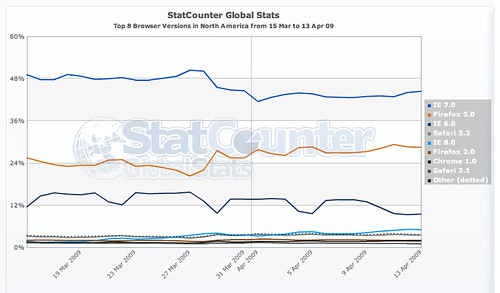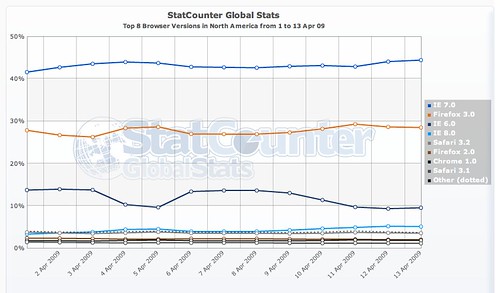
While I was performing my standard Windows Update on my work virtual machine this morning, I wondered if the promised Internet Explorer 8.0 release to Windows Update had been dropped.
I switched to my test-bed, vanilla Windows XP virtual machine, ran Windows Update, and PING! Up it came. The masses of people who blindly do what Windows Update tells them to do will now be installing Internet Explorer 8 on their machines.
The interesting thing is that the only piece of software that Windows Update said was a critical Update was Internet Explorer 8.0. Given that it would be replacing Internet Explorer 7.0 on my virtual machine, how bad was Internet Explorer 7? Are they trying to push MSIE6 and MSIE7 out of the way ASAP?
Today should see a large number of new installs of Internet Explorer 8, either on purpose or inadvertently by those folks who install everything that Microsoft tells them to. I will be monitoring StatCounter’s GlobalStats over the next few days to see if there is a spike in, most notably, US installs of Internet Explorer 8.
Just as a sidebar, Internet Explorer 8, without the support of Windows Update, has increased from 3.5% to 6.28% of the browser share in the US (3.33% to 6.2% in North America; 2.65% to 4.4% Worldwide) in the April 1-28 2009 period. [Stats courtesy of StatCounter GlobalStats]
I can’t make a lot of comments about the quality of browsing experience in one version of Internet Explorer over another; I have been a dedicated Firefox user on Mac, and a Safari user on Windows (yes, that is weird) for a while. But the desire to move as many people as quickly as possible to a new browser speaks volumes to where Microsoft thinks the Web is going. And they realize that it is not going in the direction that its older browsers had been taking it.
Further Updates will follow.
UPDATE: A colleague forwarded me this article on the release of Internet Explorer 8 to Windows Update. Effectively, you still have to go through the Web interface and agree to download the new browser. It’s not being pushed down onto Windows users through the automatic update built into the OS, no doubt to placate the glacially-slow IT departments I mentioned here.


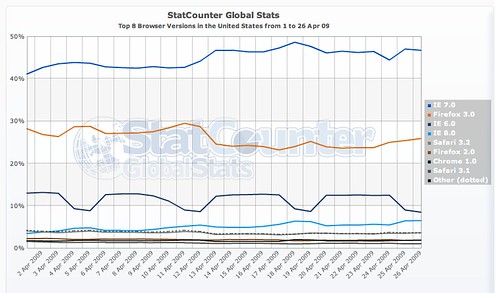
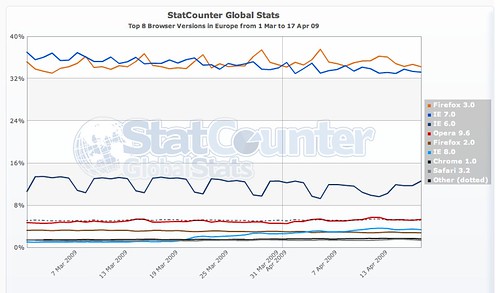
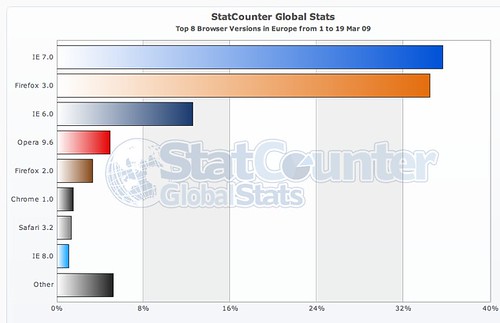
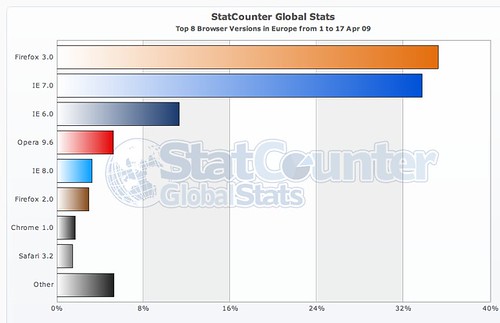


 It’s official. According to the IE Dev Blog at MSDN, MSIE8 will be the direct upgrade path via Windows Update in the third week of April. [
It’s official. According to the IE Dev Blog at MSDN, MSIE8 will be the direct upgrade path via Windows Update in the third week of April. [
